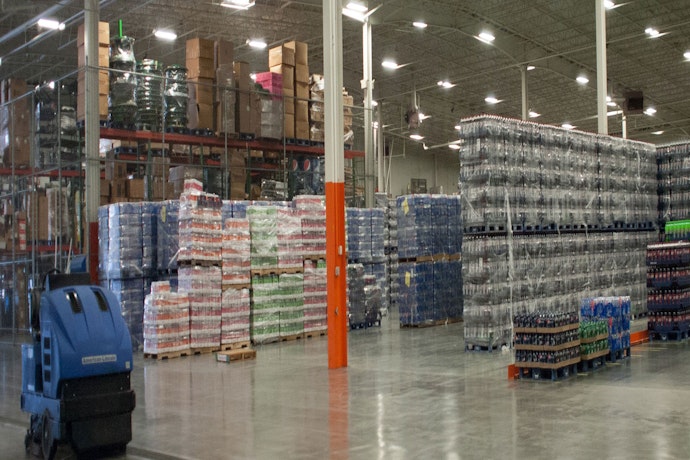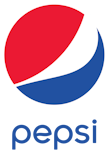9 Secrets to Reducing your Fleet Expenses
As a fleet owner, your day-to-day costs can quickly add up. What you don’t know is there are further hidden, expensive...
Read moreCase study


Delivery routes were once set in stone. Whether a driver had 100 or 1,000 cases of anything (snacks, soft drinks, bread, beer) their route was the same, day-in day-out. This was hardly efficient and often taxing on the workforce as some days featured lighter workloads, and other days had them making deliveries well into the night. Pepsi Bottling Co. of Hickory, North Carolina, faced such challenges.
In doing so, Pepsi achieved fuel savings, put less wear and tear on its fleet and achieved a workload balance that spread across all drivers.
“Our orders come in every day, and we send them through an API [that feeds into the Verizon Connect software], says Jay Teeter, logistics manager at Pepsi Bottling Co. “We tell the system that we want a 420 case-per-truck average and that we want to use a certain amount of trucks, or we just have the system tell us how many trucks we need. There are manual tweaks, but there’s really nothing to it.”
“Three summers ago,” says Teeter, “we just ran 11 trucks every day in Hickory. This summer, we run as few as eight on some days. We keep track and added it up, that saves us 30 or so routes each month versus running 11 every day. And then, as temperatures drop and soft drink sales go down, we start seeing the need for fewer and fewer trucks. In Hickory, you see two or three fewer trucks on average in the winter versus summer.”
While it may sound complicated, it was a smooth transition for route dispatchers at Pepsi. “It was an easy learning curve for our daily dispatcher versus [the previous solution],” says Teeter.
“With that, it took a pretty extensive training programme with Verizon Connect, but after a few days of guidance through the process they more or less had it. That was the immediate thing you see—the ease of operation.”
Pepsi was also able to work with Verizon Connect on further developing the software to meet specific needs and reporting metrics that it required—a process that Teeter reports as going smoothly.
“We needed the ability to see multiple capacity metrics like case count, pallet count, and weight on the routing screen at the same time” says Teeter. “Before you could only look at one capacity metric at a time. Verizon Connect was able to develop and get that to us and we now send our orders with [that information].”
“ … Every time you move or make a change, you can see it adjust the revenue, the cases, whatever metric you are using. It’s a good process to begin a more strategic reroute.”
All together, from ease-of-use to the practical efficiencies realised by the system,Teeter sees the value in dynamic routing and anticipates a near future in which dynamic routing, as well as fleet management and other location intelligence solutions interconnected through Verizon Connect will be added to more vehicles in his fleet.
The Challenge:
The beverage company sought to achieve efficiencies in its fleet as the changing seasons, as well as changing delivery methods and customer demands created fluctuation in product volume.
The Pepsi Hickory facility averages 3 million cases annually, while the neighbouring Asheville facility distributes 4 million cases. The Hickory location has recently switched over many of its route trucks to a box trailer with lift gate. Prebuilt orders are on mini pallets and an electric pallet jack is used to move them into stores. The trailer allows for pallets of different sizes—all of which are pre-filled to meet specific orders along the route. This saves the driver time at the point of delivery and significantly improves productivity.
It was in that same spirit of efficiency that the company began exploring dynamic route optimisation two years ago. Pepsi wanted routes that retained some consistency—including specific delivery days, time windows and preferred customer/driver combinations—but allowed for flexibility to best optimise routes and geography to both standardise load sizes and perform all work with the fewest amount of routes each day.
The Solution:
Verizon Connect was able to help Pepsi accomplish their goals through a technology called Territories, which allows companies to give geographic-centric routes to drivers without limiting routing options to those boundaries. Competitive routing tools require companies to create hard-lined geographic borders that limit routes to being sequenced within those boundaries.
This approach is very time consuming, does not take into account dynamic variables and results in extremely inefficient routes. This new routing solution loosens those geographic constraints to ensure the most intelligent and cost-efficient routing scenarios while also taking into account other variables that drivers encounter each day. The best part: As the routes are adjusted, the dispatchers see in near real-time the effect that a route has on factors ranging from the total cost of the route to the size of the load that day.
“You can basically draw the polygonal territory,” explains Teeter. “Adjust them, stretch them, trim them down—and every time you move or make a change, you can see it adjust the revenue, the cases, whatever metric you are using. It’s a good process to begin a more strategic reroute.”
The Results:
By implementing a dynamic routing system—in this case, Verizon Connect Route with Advanced Territories, the company was able to reduce total routes per month by 30 per location. That’s roughly 720 routes over the course of a year.
Tags: Cost control, Customer service, Dispatching & scheduling, Productivity & efficiency, Team management, Routing
As a fleet owner, your day-to-day costs can quickly add up. What you don’t know is there are further hidden, expensive...
Read moreVerizon Connect Reveal tracks the fleet data that can have a big impact on your business. These are things like where...
Read moreAt Verizon Connect, we can only provide the highest possible level of service to fleet managers and business owners by...
Read moreReveal tracks the fleet data that can have a big impact on your business. These are things like where your vehicles are...
Read more